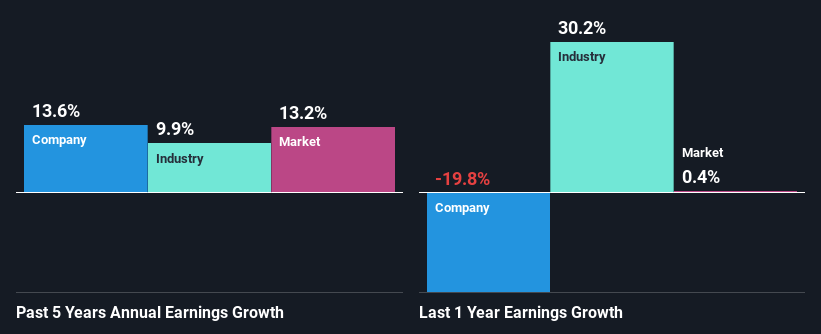- South Korea
- /
- Personal Products
- /
- KOSDAQ:A234690
Are GREEN CROSS WellBeing Corporation's (KOSDAQ:234690) Fundamentals Good Enough to Warrant Buying Given The Stock's Recent Weakness?

It is hard to get excited after looking at GREEN CROSS WellBeing's (KOSDAQ:234690) recent performance, when its stock has declined 10.0% over the past week. But if you pay close attention, you might find that its key financial indicators look quite decent, which could mean that the stock could potentially rise in the long-term given how markets usually reward more resilient long-term fundamentals. Particularly, we will be paying attention to GREEN CROSS WellBeing's ROE today.
Return on equity or ROE is a key measure used to assess how efficiently a company's management is utilizing the company's capital. Simply put, it is used to assess the profitability of a company in relation to its equity capital.
See our latest analysis for GREEN CROSS WellBeing
How To Calculate Return On Equity?
The formula for ROE is:
Return on Equity = Net Profit (from continuing operations) ÷ Shareholders' Equity
So, based on the above formula, the ROE for GREEN CROSS WellBeing is:
6.7% = ₩6.7b ÷ ₩100b (Based on the trailing twelve months to March 2024).
The 'return' is the profit over the last twelve months. Another way to think of that is that for every ₩1 worth of equity, the company was able to earn ₩0.07 in profit.
What Has ROE Got To Do With Earnings Growth?
Thus far, we have learned that ROE measures how efficiently a company is generating its profits. Based on how much of its profits the company chooses to reinvest or "retain", we are then able to evaluate a company's future ability to generate profits. Assuming everything else remains unchanged, the higher the ROE and profit retention, the higher the growth rate of a company compared to companies that don't necessarily bear these characteristics.
GREEN CROSS WellBeing's Earnings Growth And 6.7% ROE
On the face of it, GREEN CROSS WellBeing's ROE is not much to talk about. A quick further study shows that the company's ROE doesn't compare favorably to the industry average of 8.5% either. However, the moderate 14% net income growth seen by GREEN CROSS WellBeing over the past five years is definitely a positive. So, there might be other aspects that are positively influencing the company's earnings growth. Such as - high earnings retention or an efficient management in place.
As a next step, we compared GREEN CROSS WellBeing's net income growth with the industry, and pleasingly, we found that the growth seen by the company is higher than the average industry growth of 9.9%.

Earnings growth is a huge factor in stock valuation. The investor should try to establish if the expected growth or decline in earnings, whichever the case may be, is priced in. By doing so, they will have an idea if the stock is headed into clear blue waters or if swampy waters await. If you're wondering about GREEN CROSS WellBeing's's valuation, check out this gauge of its price-to-earnings ratio, as compared to its industry.
Is GREEN CROSS WellBeing Using Its Retained Earnings Effectively?
GREEN CROSS WellBeing doesn't pay any regular dividends, meaning that all of its profits are being reinvested in the business, which explains the fair bit of earnings growth the company has seen.
Conclusion
On the whole, we do feel that GREEN CROSS WellBeing has some positive attributes. With a high rate of reinvestment, albeit at a low ROE, the company has managed to see a considerable growth in its earnings.
New: Manage All Your Stock Portfolios in One Place
We've created the ultimate portfolio companion for stock investors, and it's free.
• Connect an unlimited number of Portfolios and see your total in one currency
• Be alerted to new Warning Signs or Risks via email or mobile
• Track the Fair Value of your stocks
Have feedback on this article? Concerned about the content? Get in touch with us directly. Alternatively, email editorial-team (at) simplywallst.com.
This article by Simply Wall St is general in nature. We provide commentary based on historical data and analyst forecasts only using an unbiased methodology and our articles are not intended to be financial advice. It does not constitute a recommendation to buy or sell any stock, and does not take account of your objectives, or your financial situation. We aim to bring you long-term focused analysis driven by fundamental data. Note that our analysis may not factor in the latest price-sensitive company announcements or qualitative material. Simply Wall St has no position in any stocks mentioned.
About KOSDAQ:A234690
GREEN CROSS WellBeing
Provides personalized nutrition injections in South Korea.
Adequate balance sheet with questionable track record.

